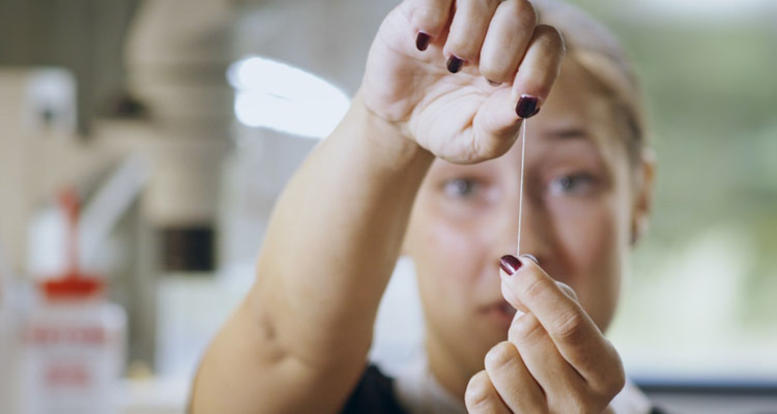
Biophysicist Irina Iachina, University of Southern Denmark, holds a silk fiber, produced by a golden orb-web spider. Credit: Anders Boe/University of Southern Denmark
Numerous scientists aspire to unlock the remarkable capability of spiders to spin silk threads that are immensely strong, lightweight, and flexible. In fact, pound for pound, spider silk is stronger than steel and tougher than Kevlar. However, no one has been able to replicate the spiders’ work yet.
If we ever manage to develop a synthetic equivalent with these characteristics, a whole new world of possibilities may open: Artificial spider silk could replace materials like Kevlar, polyester, and carbon fiber in industries and be used, for example, to make lightweight and flexible bulletproof vests.
Postdoc and biophysicist Irina Iachina from the Department of Biochemistry and Molecular Biology, University of Southern Denmark (SDU), is involved in this race to uncover the recipe for super silk. She has been fascinated by spider silk since her time as a master’s student at SDU, and currently, she is researching the topic at the Massachusetts Institute of Technology in Boston with support from the Villum Foundation.

Biophysicist Irina Iachina, University of Southern Denmark, studying spider silk on a computer. Credit: Anders Boe/University of Southern Denmark
As part of her research, she is collaborating with associate professor and biophysicist Jonathan Brewer at SDU, who is an expert in using various types of microscopes to peer into biological structures.
Together, they have now, for the first time, studied the internal parts of spider silk using an optical microscope without cutting or opening the silk in any way. This work has now been published in the journals Scientific Reports and Scanning.
“We have used several advanced microscopy techniques, and we have also developed a new kind of optical microscope that allows us to look all the way into a piece of fiber and see what’s inside,” explains Jonathan Brewer.
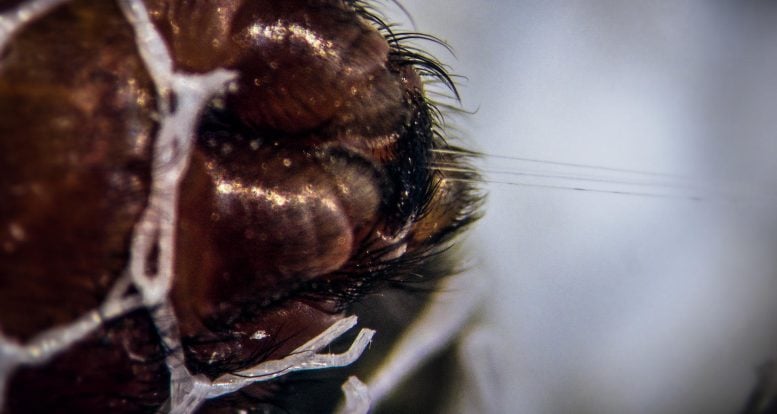
The golden orb web spider produces its silk from its rear end. Credit: Anders Boe/University of Southern Denmark
So far, spider silk has been analyzed using various techniques, all of which have provided new insights. However, there have also been drawbacks to these techniques, as Jonathan Brewer points out, since they often require cutting the silk thread (also called fiber) open to obtain a cross-section for microscopic examination or freezing the samples, which can alter the structure of the silk fibers.
“We wanted to study pure and unmanipulated fibers that have not been cut, frozen, or manipulated in any way,” says Irina Iachina.
For this purpose, the research duo used less invasive techniques such as Coherent Anti-Stokes Raman Scattering, Confocal Microscopy, Ultra-resolution Confocal Reflection Fluorescence Depletion Microscopy, Scanning Helium Ion Microscopy, and Helium Ion Sputtering.
The different studies revealed that the spider’s silk fiber consists of at least two outer layers of lipids, i.e., fats. Behind them, inside the fiber, there are numerous so-called fibrils running in a straight, tightly packed side-by-side arrangement (see illustration). The fibrils have a diameter ranging between 100 and 150 nanometers, which is below the limit of what can be measured with a regular light microscope.
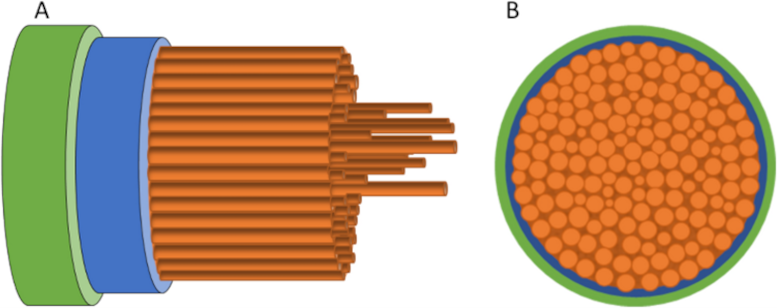
Illustration from the Scientific Reports paper: Schematic representation (not to scale) of the proposed structure of a spider silk fiber as found in the present work. (A) Fibre side view, (B) cross-section through fiber. An outer, non-conductive lipid-rich layer (green) of between 0.6 to 1 µm thickness, two conductive, inner autofluorescent protein layers: one which FITC shows higher affinity towards (blue), and another Rhodamine B shows a higher affinity towards (orange). The inner protein core consists of crystalline fibrils, aligned parallel to the long axis of the fiber, surrounded by more amorphous protein regions. Credit: Iachina/Brewer, University of Southern Denmark.
“They are not twisted, which one might have imagined, so now we know that there is no need to twist them when attempting to create synthetic spider silk,” says Irina Iachina.
Iachina and Brewer work with silk fibers from the golden orb-web spider, Nephila Madagascariensis, which produces two different types of silk: One, called MAS (Major Ampullate Silk fibers), is used to construct the spider’s web, and it is also the silk the spider uses to hang on. Irina Iachina refers to it as the spider’s lifeline; it is very strong and has a diameter of approximately 10 micrometers.
The other, called MiS (Minor Ampullate Silk fibers), serves as an auxiliary material for the construction. It is more elastic and typically has a diameter of 5 micrometers.
According to the duo’s analysis, the MAS silk contains fibrils with a diameter of approximately 145 nanometers. For MiS, it is approximately 116 nanometers. Each fibril is made up of proteins, and several different proteins are involved. These proteins are produced by the spider when it creates its silk fibers.
Understanding how they can create such strong fibers is important, but the fibers are also challenging to produce. Therefore, researchers in this field often rely on spiders to produce the silk for them.
Alternatively, they can turn to computational methods, which is what Irina Iachina is currently working on at MIT: “Right now, I am doing computer simulations of how proteins transform into silk. The goal is, of course, to learn how to produce artificial spider silk, but I am also interested in contributing to a greater understanding of the world around us,” she says.
References: “Nanoscale imaging of major and minor ampullate silk from the orb-web spider Nephila Madagascariensis” by Irina Iachina, Jacek Fiutowski, Horst-Günter Rubahn, Fritz Vollrath and Jonathan R. Brewer, 24 April 2023, Scientific Reports.
DOI: 10.1038/s41598-023-33839-z
“Helium Ion Microscopy and Sectioning of Spider Silk” by Irina Iachina, Jonathan R. Brewer, Horst-Günter Rubahn and Jacek Fiutowski, 22 May 2o23, Scanning.
DOI: 10.1155/2023/2936788

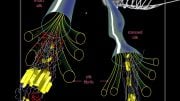
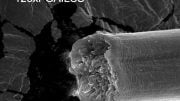
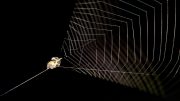

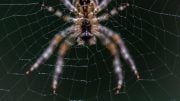
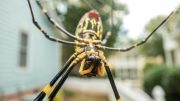
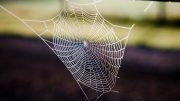
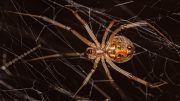
When cleaning out an old shed with lots of spiders, I can always tell if there are Black Widow spiders there because the web they make is 10 times stronger than the webs woven by any other spider. Sometimes it actually takes some significant force to break these webs.
Outstanding
When all of the Amazon warehouses close they can be turned into spider homes to make them grow larger to produce more silk (farm spiders to create indestructible vehicles so no one will die in car accidents anymore).
Another argument for intelligent design how can science be so blind
I Love science it proves God.
Not interested in any replies thank you!
The cross section of silk thread looks like muscle fibers. I would be looking at builting a printer that emulates the spiders gland
Not interested in any replies and science proves God? Lol where do I even start. Keep those eyes and ears covered someone will come and tuck you into bed soon lol
Ask spiderman how to make the web
“science … so blind
I Love science it proves God.
Not interested in any replies…”
People like you are evidence that Gods design is not very intelligent at all.
Science is based on actual observed evidence it’s not based on blind acceptance of someone’s word science is sound knowledge. There is no need to bash people’s beliefs just as bashing science is also blindvignorance
I love the anti God mockers responses. They never amount to anything more than you’re so dumb! LOL! Try telling that to God when you meet Him ya Pillock’s!!!